I created this timeline of my attempts at Middle Eastern costume in the SCA in part to illustrate the differences in coat construction between the Ghawazee coat and a more period correct coat and also to show that no one "gets there" in a day, or even a year! There is always more to learn and explore, and new things are brought to us daily by archeologists, academics and other researchers in the field. It often takes years (or a decade in my case!) to soak it all in and apply it to our wardrobes and attempts at recreating the past.
| Mid-1990s -- My first attempts at Middle Eastern garb were in no way, shape or form intended to be historic. It was "fun garb" that was inspired by the mass amounts of cheap bellydance attire they sell at Pennsic. I loved my "Turkish vests", lurex striped harem pants (I swear I had these in about 7 different colors) and jingle-butt scarves. I liberally applied tacky trim to everything I could. I was still fairly new to the SCA and while I had a nice variety of passable newbie garb (bog dresses, tunics, renn faire bodices), I knew was not making an "attempt" with these "Middle Eastern" costume and the fact that these things were so prevalent for sale, and that they were worn by so many others, allowed me to think that such items were truly "ok". |
| Late 90s/Early 2000s -- I was looking to go for a less "cabaret" look (as I perceived it at the time) for my "party clothes" at Pennsic and I went two routes with my garb. The first was that I adopted the Ghawazee coat, which I was told, at the time, was the "period" Middle Eastern garment for the SCA. Currently, some groups in the SCA recognize this garment for what it is and that it is based on Orientalist paintings from the 19th Century. However, there is still a misconception by those not involved in Middle Eastern costuming in the SCA and by newcomers coming from the mundane dance world and it is often still thought of as "period" in these circles. Now, I still believe that this garment is actually progress over things that came years before. It is a step towards authenticity for those just making the move towards "period" (or for those who already have such garments in their closet), but I do think that there needs to be a greater understanding of the origins of this costume element. Below the photo of my Ghawazee coat is one of the more common Ghawazee coat patterns that can be found. It involves a curved seam at the waist and back for fitting. It also often has a U shaped bust, deep side (and sometimes back) slits and the sleeves are only attached at the top of the shoulder allowing for a vent/slit at the underarm. Additionally the sleeve hole is curved like a modern shirt. The image below is one that creeps up commonly in the SCA to advertise haflas (it is a 19th century painting by David Roberts), so it is no wonder that this garment is considered period by so many! |
| 2004-2005 -- I had finally started to do real research on period costume from the Middle and Near East. I dabbled with Persian and Ottoman both and had started to create coats using rectangular construction. I also switched from poofy harem pants to salwar and have never once regretted that transition as it was too easy for me to step on the edges of my own poofy pants and trip!. To the left I have on one of my first attempts at a Persian coat (fully lined), over one of my old gauze chemises and salwar. I also often wore these coats over my older Ghawazee coats to create a more period layered look that you can see in the image below left. At this time I was also weaning myself off of wide, triangular hipscarves and choosing to instead wear no belt or simple sashes. I wish now that i had left the trim off the sleeves of my early coats. Below are diagrams detailing the construction differences in the period cut coats (top row) and "Ghawazee coats". The period coats use rectangular construction (which saves on the amount of fabric you use) and with practice fitting them, you can still get a snug fit for Ottoman coats (a fit that often also appeals to dancers). I sampled with several styles but most often use the one on the far right for all of my coat layers. |
| Moving Forward: I now tend to recreate two looks for my Ottoman persona. to the left is my "Ottoman Woman's Indoor Look" - salwar, gomlek and chirka - often with a pillbox hat and veil. I like this garb for Pennsic and typically choose all linen for these garments. Below that is a photo of my first full Ottoman costume (minus the modesty garment that would be worn in public). Salwar (in Indian block print cotton in this case), linen gomlek, linen chirka and an entari that has a pattern that is not quite "right" (though the color palette is good). We often have to use what we can find for such projects, so if I can get a pattern that is close, and the colors are correct and the price is right, I happily make the purchase and use it. The coat is lined with a striped cotton and has an olive green linen facing. The belt on both costumes is a long silk sash that wraps twice and has tassels at the end. The buttons on both hirkas are self-fabric covered buttons from Drizt and the buttons on the patterned entari are thread covered buttons in colors that match the coat. (Please pardon the shoes and glazed look in the lower photo, I had been cooking a feast all day and was beyond tired but wanted a picture of my new garb before I sat down to eat!) Since creating these items, I have done more research and compiled an an entirely new set of garb for Atlantia's Ottoman 12th Night as seen below. |
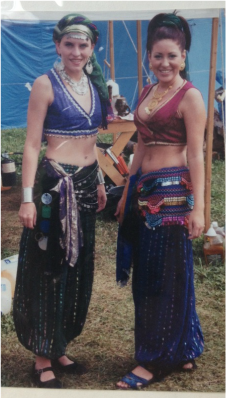
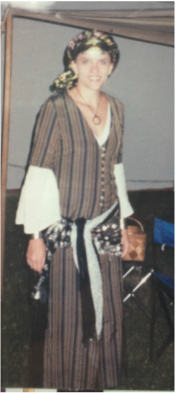
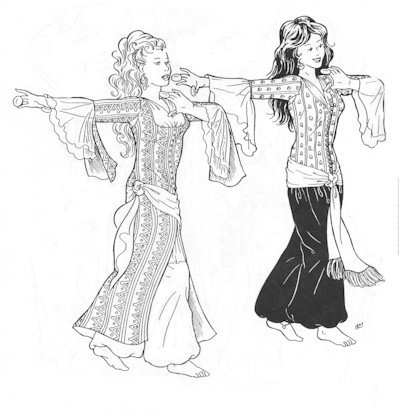
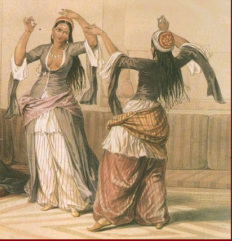

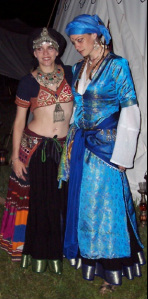
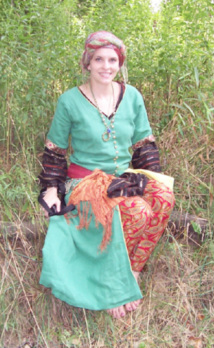
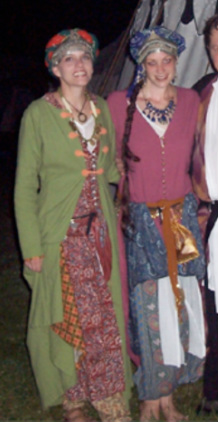
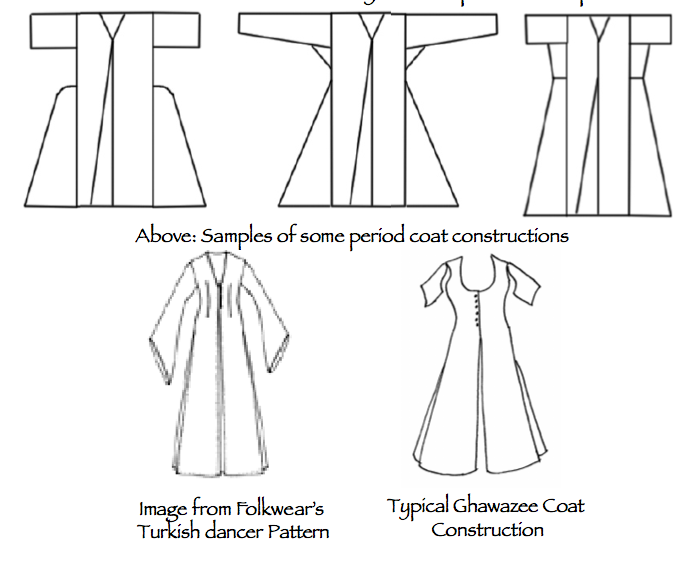
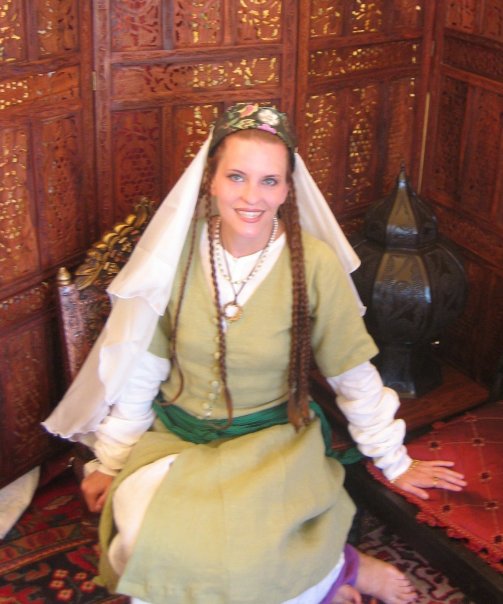

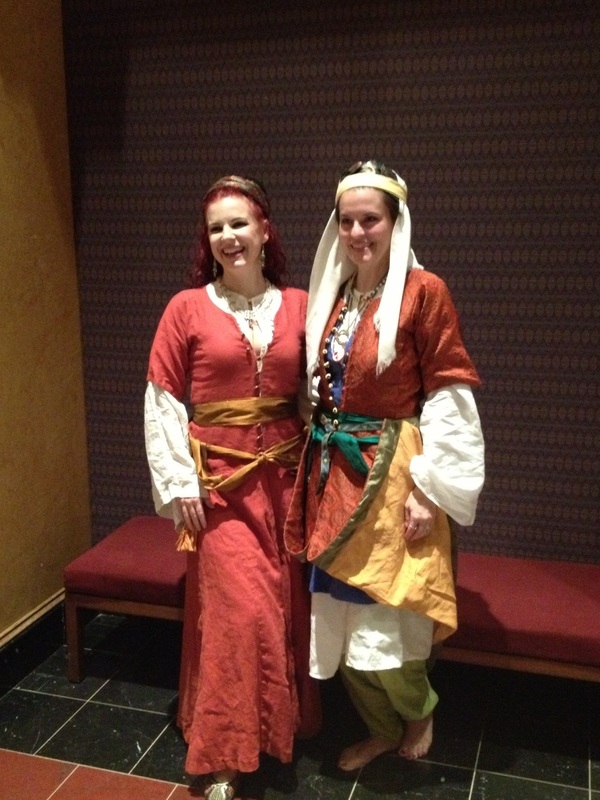
 RSS Feed
RSS Feed